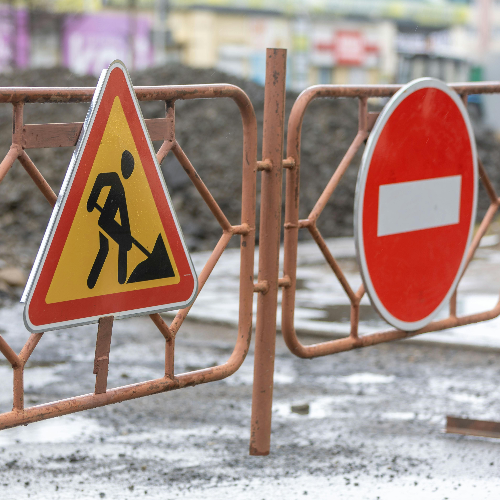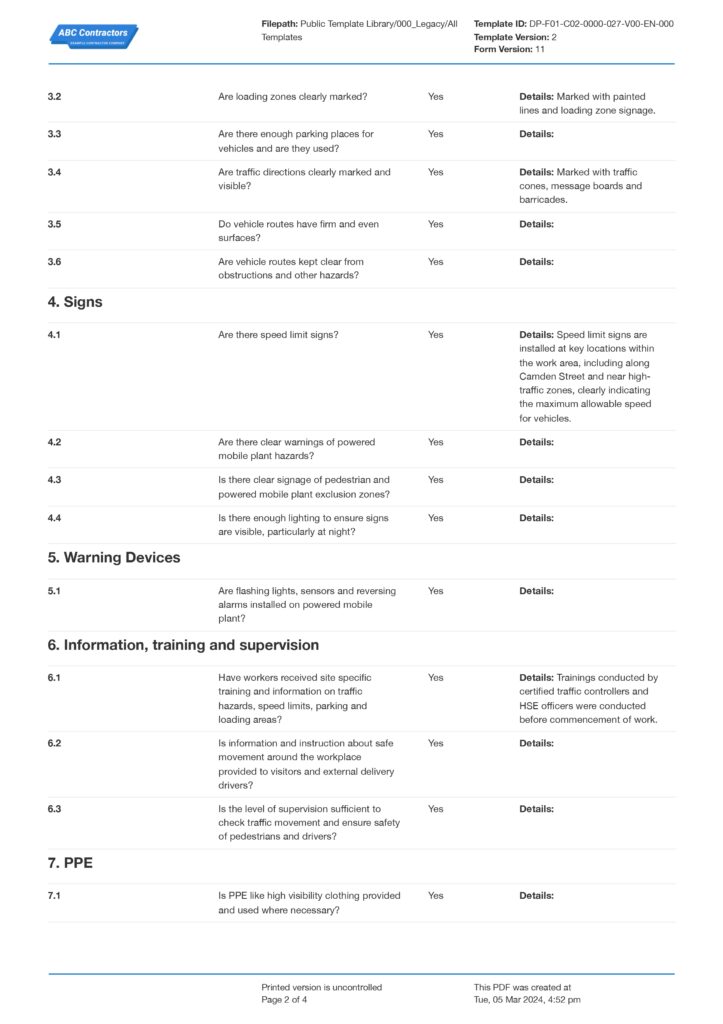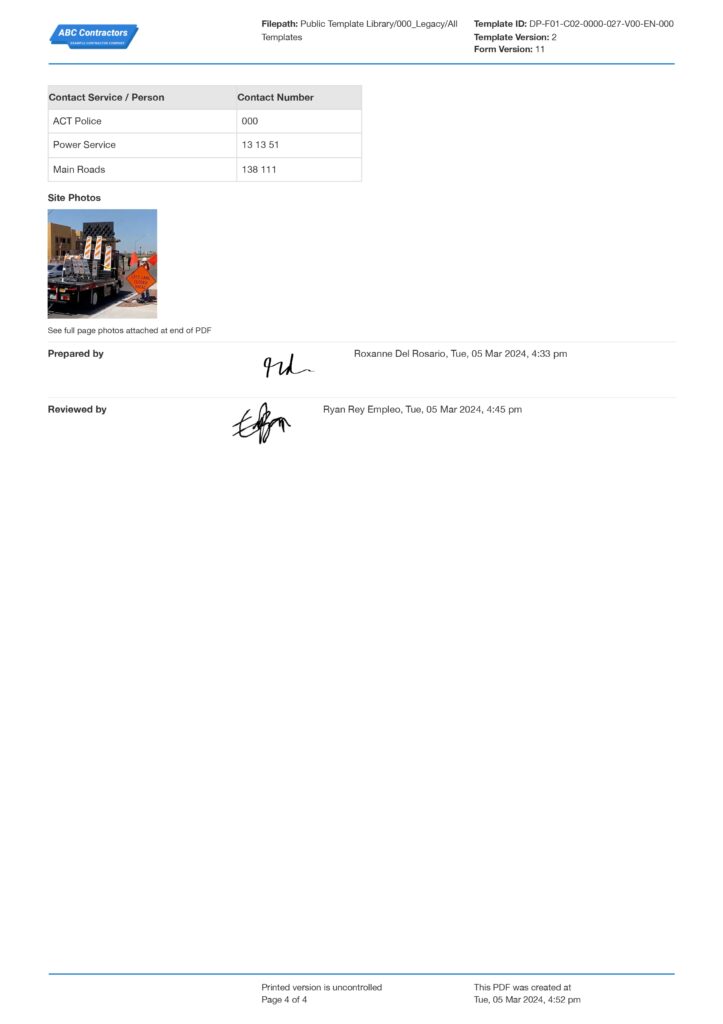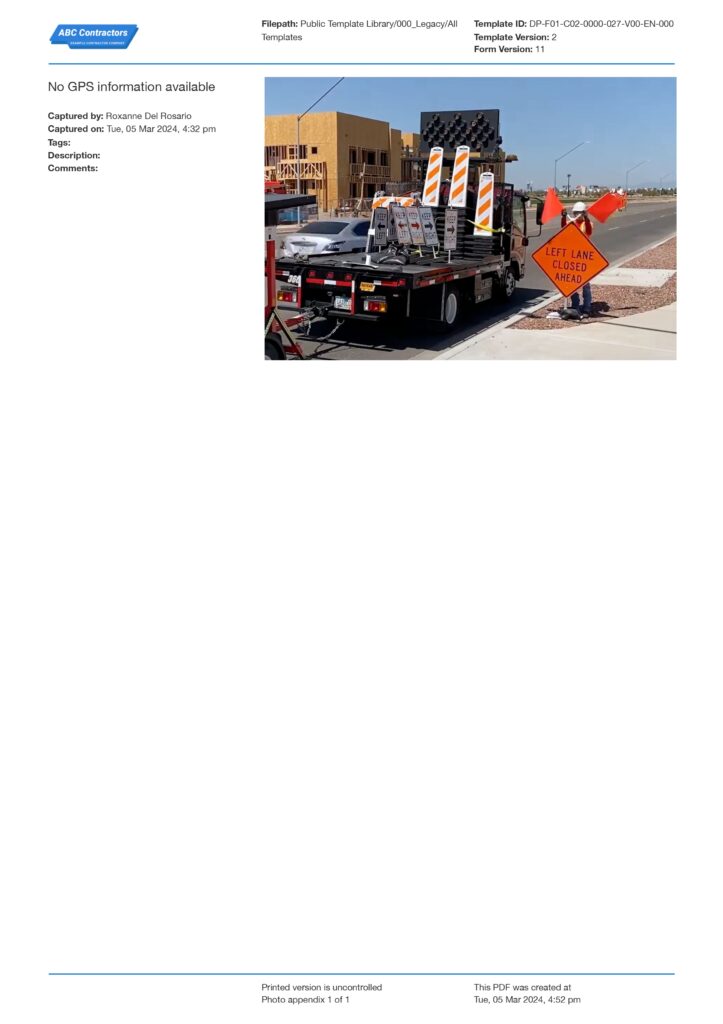Article Page – HS2 Route-Wide Traffic Management Plan (RTMP)
HS2 Route-Wide Traffic Management Plan (RTMP)
Learn how HS2 UK developed its strategy for managing traffic in the affected local areas. A free resource like a Traffic Management Plan is also included to assist you in simplifying your traffic management procedure, similar to how the HS2 accomplishes it.

Table of Contents
Article Summary
- The Route-Wide Traffic Management Plan (RTMP) specifies the contractual requirements of the Principal Contractors for High Speed 2 (HS2) UK Project development. This also determines the extent of those who will carry out, monitor, and evaluate traffic flow and safety management activities under the project's Environmental Minimum Requirements, as mentioned here in the HS2 Environmental Statement.
- The Route-Wide Traffic Management Plan addresses the management of HS2 works, traffic, and people on the road network, as well as the management of construction vehicles and safety on construction sites.
- Principal Contractors will oversee their and suppliers' activities. Logistics to and from HS2 building sites, including railheads and sustainable placement, off-site transfer of excavated materials and garbage, and coordination with Principal Contractors and stakeholders are included.
What is the importance of the HS2 RTMP?
The HS2 Route-Wide Traffic Management Plan (RTMP) outlines the contractual obligations for the Principal Contractors responsible for HS2's construction. This also informs the scope of those who will execute, monitor, and assess traffic flow and safety management operations on behalf of The Nominated Undertaker, such as utility firms obligated by the project's Environmental Minimum Requirements. The standards outlined in the RTMP outweigh those in the Specification for Highway Works.
The RTMP aims to guarantee that the Nominated Undertaker and their Contractors adhere to the standards outlined in the preceding papers. It also offers a detailed plan for project delivery. The document outlines negotiations with highway officials along the route, from the Highway Subgroup to the Planning Forum for each project phase.
How to format your own Traffic Management Plan?
HS2 has taken a meticulous approach to developing its Route-Wide Traffic Management Plan. As a contractor of the High Speed 2 railway, making your Local Traffic Management Plan also requires the same details found on the RTMP HS2. This ensures that your plans align with the HS2’s targets and objectives in managing traffic. To better gauge how your Traffic Management Plan should look, visit the example below.

Use this Traffic Management Plan for free
HS2 Route-Wide Traffic Management Plan – Traffic flow management scope
General Scope for developing the HS2 Route Wide Traffic Management Plan (RTMP)
The scope of the RTMP HS2 Traffic flow largely includes developing vehicle routes for approval, implementing vehicle management, monitoring flow using Vehicle Booking Systems, assurance and reporting, and establishing vehicle identity. The plan addresses the management of HS2 works, traffic, and people on the road network, as well as the management of construction vehicles and safety on construction sites. This includes managing site access points for vehicles and pedestrians, site plazas for parking, welfare, and other facilities, and haul roads that connect construction sites.
Included route-wide requirements
The requirements for traffic flow heavily rely on the Code of Construction Practice (COCP). When necessary, the RTMP should include the following criteria for managing construction vehicles on a route-wide basis:
- monitoring requirements
- means of monitoring truck use and any routes prohibited from use
- dealing with large goods vehicles and abnormal loads
- Clear identification of heavy goods vehicles used in construction that are under the control of the Principal Contractors.
- The introduction of a GPS vehicle location and tracking system for tipper lorries under the control of the Principal Contractors will facilitate the movement of materials and waste in bulk, as well as provide appropriate tracking solutions for measuring HS2-related traffic flows.
- monitoring for deviation from approved routes.
Undertakings and Assurances (U&A)
Construction traffic management must adhere to Undertakings and Assurances regarding permitted traffic levels on specific truck routes or roads with restrictions on large or heavy goods vehicles (over 7.5t or 3.5t, respectively). This proposes measures to ensure compliance with the U&A and effective monitoring of deviations from authorized routes.
Route-Wide Traffic Management Plan: The responsibilities and plan preparation
Principal Contractors will be responsible for managing their operations and those of suppliers. This includes logistics to and from HS2 construction sites, including railheads and sustainable placement, as well as off-site movement of excavated materials and waste, and coordination with other Principal Contractors and stakeholders. The process involves the application of the CDM requirements, as applicable, and the completion or drafting of plans outlined in the RTMP.
To facilitate effective consultation and ensure that requests for approval are determined expeditiously, contractors should engage in proportionate forward discussions about prospective requests for approval with the qualifying authority and statutory consultees, as per the relevant Planning Memorandum. The principal contractors will need to prepare a local traffic management plan and a route management, improvement, and safety plan to ensure smooth consultation.
The HS2 UK project isn't just limited to traffic management, but also involving a broader environmental scope. The HS2's environmental documentation, like a HS2 Sustainable Progress Report, involves maintaining the air quality HS2 Air Quality Strategy and HS2 Air Quality Action Plan), and monitoring noise and vibration (HS2 Construction Noise and Vibration Methodology Report).
Creating Traffic Management Plans the smart way
The HS2 strictly enforces traffic management standards. This means that traffic management documentation must be of excellent quality and produced on time when required. However, when using paper-based forms, things might get a bit messy. Creating paper-based forms is time-consuming and takes a lot of room for compilation. This might cause delays in delivering safety measures as well as the loss of critical records during audits. This sort of procedure is a bother and does not correspond with the goals of the HS2.
Fortunately, technology has got us covered. The Traffic Management Plan App allows you to expedite and optimize your process for providing traffic management solutions in regions impacted by the High Speed 2 Railway development. This program allows you to generate standard-compliant forms and papers that you can conveniently fill out and keep in one location. This eliminates the effort of developing forms from scratch, printing them, and accumulating them until they take up all available office space. In addition, you will no longer need to retype data on your computer to create your report. With a few clicks and taps, this tool makes it simple to create HS2 traffic control plans and associated papers.
Summary of HS2 Route-Wide Traffic Management Plan (RTMP)
The United Kingdom HS2 project has the potential to significantly improve the lives of UK inhabitants. This brilliant proposal has created opportunities that could potentially benefit transportation, companies, and the economy. Despite the future benefits as mentioned here in HS2 (High Speed 2) UK Project Benefits, the project has a significant effect on traffic, especially on residential areas affected by its construction. It has the potential to disturb inhabitants' typical routes near the building site. As a result, HS2 developed a Route-Wide Traffic Management Plan to alleviate the project's consequences. They have provided solutions to offer the safest alternative route for both residents and workers.
Frequently Asked Questions
Are contractors working on the HS2 project required to have a traffic management plan?
Yes – this process is required under the High Speed Rail (London–West Midlands) Act 2017 and the HS2 Environmental Minimum Requirements (EMRs) in the UK. Contractors must develop Route-Wide and Local Traffic Management Plans in consultation with local authorities to ensure safe vehicle routing, signage, and mitigation of impacts. You can easily comply with these regulations by preparing and submitting traffic management plans for approval, coordinating with highway and emergency services, and obtaining the necessary consents under Schedule 4 of the HS2 Act before commencing works.
How is technology changing how people do traffic management plans?
Technology is transforming traffic management planning by moving away from paperwork and spreadsheets and bringing in easy-to-use digital tools like Dashpivot. With these, teams can quickly build and update plans, share them instantly, and keep everything compliant without the hassle. The result is saving time, having better data on hand, and making worksites safer and more efficient for everyone.
Does Sitemate offer templates for Traffic Control Plans?
Yes – Sitemate offers ready-to-use and editable Traffic Control Plan templates that can also be customized for your workflow. Companies of all sizes in the construction and infrastructure industry are using these templates right now to streamline their traffic control planning and on-site safety management.
Related resources

HS2 Air Quality and Dust Monitoring Report
Monitor air and dust emissions in HS2 projects to meet environmental standards.

HS2 Sustainability Progress Report
Make sure HS2 projects are sustainable and environmentally-friendly with this smart template.

HS2 Air Quality Strategy
Streamline strategy-making by developing ideas while on the field.




